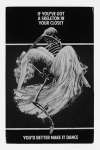Giorgio
De Chirico
Giorgio De Chirico, the preeminent pioneer of Metaphysical Art, captivated the world with his enigmatic, dreamlike cityscapes and classical figures. If you’re looking for original Giorgio De Chirico prints and editions for sale, or would like to sell, request a complimentary valuation and browse our network’s most in-demand works.
Giorgio De Chirico art for sale
Discover Giorgio De Chirico prints for sale, exclusively available through our private network of collectors. Explore signed and unsigned screenprints, lithographs, digital prints, and rare editioned proof prints by era-defining blue chip artists.
Sell Your Art
with Us
with Us
Join Our Network of Collectors. Buy, Sell and Track Demand
Biography
Born in Volos, Greece, in 1888, Giorgio De Chirico was the descendant of a noble Italian family. His early years were steeped in the rich cultural heritage of the Mediterranean, which would shape his artistic vocabulary. His education was eclectic; he received initial artistic training at the Athens Polytechnic before moving to Munich in 1906, where he studied at the Academy of Fine Arts. There, he was influenced by the philosophical writings of Nietzsche and the works of Arnold Böcklin and Max Klinger, whose art flirted with the symbolic and the surreal.
In 1910, De Chirico moved to Florence and later to Paris, where he developed his signature Metaphysical Painting style. This period was marked by a series of seminal works, such as The Enigma Of The Oracle and The Soothsayer’s Recompense, which featured the empty, arcaded town squares that became icons of his oeuvre. De Chirico's masterful manipulation of perspective and light created eerie, foreboding environments where time appeared to stand still.
Following his service in World War I, De Chirico’s art underwent notable changes, and he began to revisit classical themes and iconography, drawing inspiration from the Old Masters. This shift was met with criticism from the Surrealists, who had once championed his earlier metaphysical phase.
Despite the controversy, De Chirico continued to exhibit widely, with significant shows in Italy and abroad. His work was celebrated for its innovative exploration of the subconscious and its impact on artists like Salvador Dalí, René Magritte, and Max Ernst, who recognised De Chirico's influence on their own surrealist expressions.
De Chirico's legacy is one of introspection and innovation. His contributions to Surrealism and the broader trajectory of modern art were honoured with retrospectives in New York. He left behind a body of work that remains influential, not only in the visual arts but also in literature and philosophy, shaping the dialogue on the power of imagination and the mysteries of the human psyche.
Giorgio De Chirico passed away in Rome in 1978, leaving a timeless legacy that continues to inspire and perplex audiences, inviting them into his world where classical beauty meets the depths of the subconscious. His work remains a testament to the enduring power of mystery in art.






























